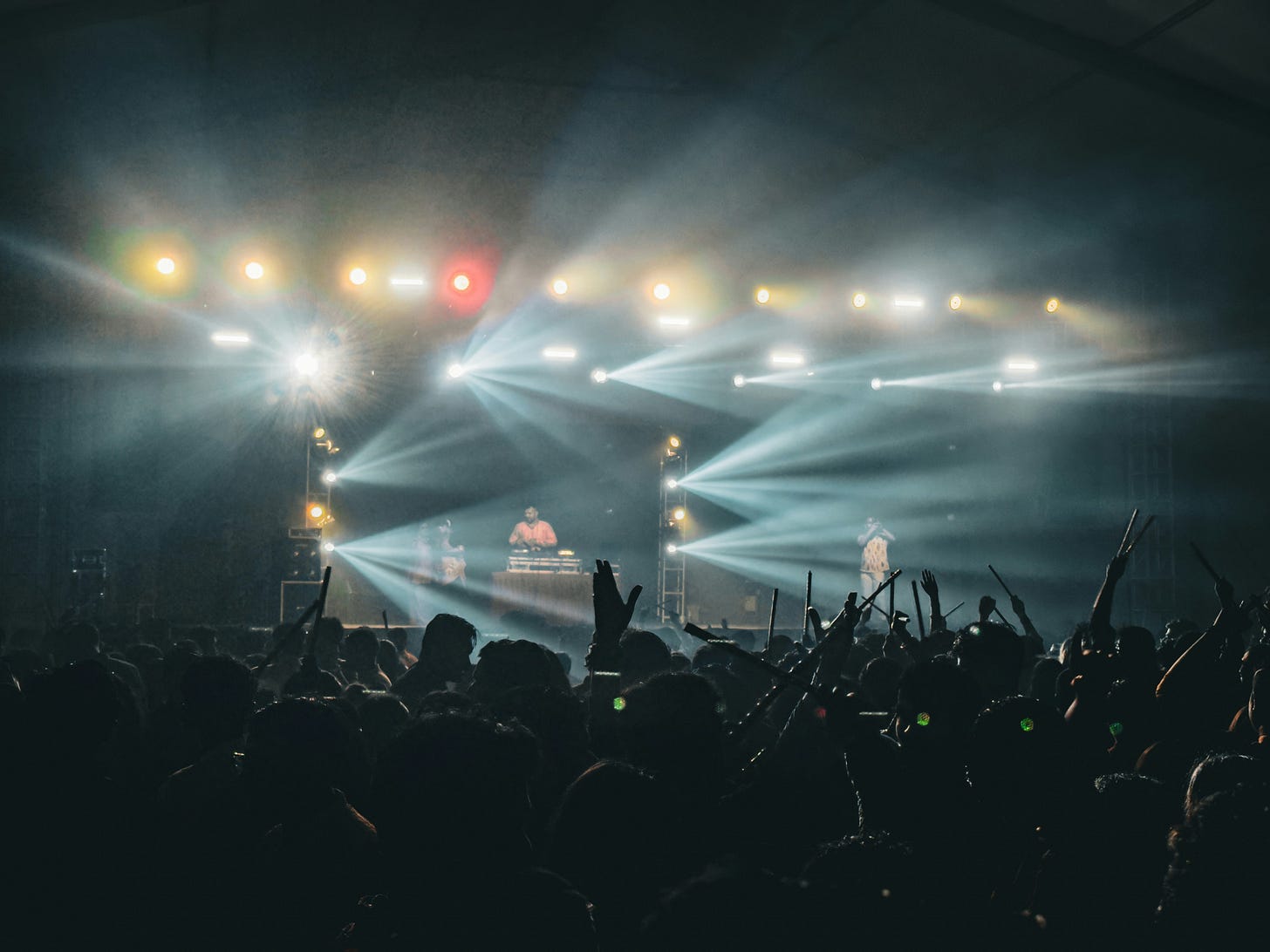Nine Nights of Cardio
Disco, dandiya, and dehydrated Gujaratis
Around this time every year, Gujarat collectively decides to replace cardio with garba and call it culture.
I’m Gujarati, which means Navratri is supposed to be my Super Bowl – nine nights of devotion, rhythm, colour, and community.
Except, I don’t dance. And I’m an introverted atheist with a festival allergy. Crowds make me itch, rituals make me break into sarcasm, and forced enthusiasm triggers mild existential dread. Yet, every year, I find myself fascinated. Not by the prayers or the people or the song and dance, but by the mirror-worked theatre of it all.
Because Navratri isn’t just a festival. It’s a living, moving organism, overfed by Gujjus for nine nights straight. It’s hard to ignore.
Raas Garba
At its heart, garba is circular: graceful, communal, and endlessly looping, symbolising the cyclical nature of life itself. When the folk songs rise – the dakla thundering, the taalis striking in unison, the dhol vibrating in your chest like a second heartbeat – it’s impossible not to feel moved. The singers stretch their voices in raw devotion to Durga, and for a brief moment, the air itself trembles. It feels ancient, like the earth remembering its own rhythm.
Disco Dandiya
But somewhere between goddesses and reels, garba lost its centre. Enter disco dandiya – a heady cocktail of devotion and cardio, bhakti set to EDM. The dhol is still there, but now it competes with the DJ, who has no qualms mashing up Sanedo with Shape of You, Dholida with Despacito. The sacred circle has been hijacked by strobe lights.
Here, the goal isn’t worship; it’s spectacle. Who twirls the fastest, who looks the sharpest, who nails the most reel-worthy Tran Taali without blinding an unsuspecting aunty with their dupatta?
Garba has side-stepped quietly. What lingers is cardio, competition, cash prizes, and content.
Kediyas and Chaniya Cholis
There is range in this beauty pageant – from royalty to backup dancers, from kediyas and chaniya cholis to dhotis with sequinned sneakers. Everyone jingles like human wind chimes, strapped with enough oxidised jewellery to trigger a minor earthquake. (Relax, I’m Gujarati. Quake humour is one of our few inside privileges).
If clothes could talk, Navratri would be one long scream of sequins. Gorgeous, yes. Dazzling, absolutely. But let’s be honest, but by the second nortu, it borders on sensory assault.
Farsan and Fasting
In theory, people fast during Navratri. No grains, no onions, no garlic. In reality, it’s a nine-night buffet. Sabudana khichdi, rajgira puris, pakodas, and potato chips stacked higher than the deity’s offerings. And let’s not forget farsan – because a Gujarati festival without fried food is basically just a satsang.
Here, “fasting” means you skip rice but gain three kilos by the fifth nortu.
The Rituals
For nine nights, lamps are lit, goddesses invoked, flowers offered. I like watching the city glow – entire neighbourhoods draped in fairy lights, sweet shops erecting pyramids of halwa, the air thick with sugar and incense. Even neighbours who’ve ignored each other all year now exchange laddoos over the gate. It’s nice.
The Contradictions
What fascinates me the most is the paradox. Navratri is devotional, but also wildly social. Ancient, yet relentlessly modern. Spiritual, yet spectacularly commercial – garba passes now cost more than IPL tickets. It’s noisy, sweaty, and overwhelming, and still, undeniably beautiful. The lights, the music, the laughter – they leak into the streets.
Gujarati or not, the dhol will summon you. Last week in New Jersey, an uncle must’ve strung fairy lights across a school gym while teenagers in Converse would’ve spun to a remix of Kala Chashma and Tara Vina Shyam. In Bangalore, I saw Tamilians, Punjabis, Malayalis, expats – all leaping into the circle with uneven rhythm and questionable outfits.
And I did what I always do: avoided the crowds, dodged the dandiyas, and enjoyed the festival sideways. Through the glow of fairy lights, the faint thump of a distant dhol, and the ripple of voices carrying old folk songs into modern chaos. From my balcony, I marvelled at a tradition resilient enough to turn devotion into disco, and still make everyone feel strangely at home.
Because Navratri’s truest rhythm isn’t religious at all. It’s human. A circle of joy wide enough for anyone willing to join in.


